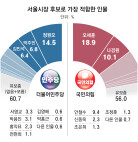Gov’t designates Phase 3 New Town sites amid polarization
Gov’t designates Phase 3 New Town sites amid polarization
Posted October. 14, 2019 07:28,
Updated October. 14, 2019 07:28
The South Korean Ministry of Land, Infrastructure, and Transport has designated five public housing development sites among the Phase 3 New Town lots around the capital area. The new sites include two sites in Wangsuk, Namyangju; Gyosan in Hanam; Gyeyang in Incheon; and Gwacheon. Their combined size is eight times bigger than Yeouido with the capacity in which 122,000 households reside. Once the site plans are approved next year, construction and distribution will begin in 2021. With the newly designated sites, sites for 140,000 households out of the government’s residence provision plan for 300,000 households have been designated and are ready for the next steps.
The Phase 3 New Town plan was proposed by the government as a measure to increase housing supply along with measures to reduce demand, such as stricter regulations on housing loans, to stabilize housing prices in Seoul. However, when it comes to housing, what matters is its location and timing, rather than the total supply volume. Sales prices of houses in Seoul stalled a bit since the September 13 measures launched last year, however, they have been on the upward trend for 15 consecutive weeks. Rising housing prices in Seoul even with the announcement of Phase 3 New Town plan show that new towns near the capital cannot replace housing demand in Seoul. The standard tactic to promote redevelopment and reconstruction of the dilapidated areas in Seoul is more like to be effective for price stabilization.
While the South Korean government has been focused on controlling housing prices in Seoul, the real estate market polarization between Seoul and rural regions has worsened. As of the end of August, there are over 60,000 unsold apartment units across the nation with over 10,000 units alone in Incheon. As Phase 3 New Town plan was announced even before the completion of the Phase 2 New Town’s construction, such situation will worsen and so will traffic issues. As the Ministry of Land, Infrastructure, and Transport announced that 20 to 40 percent of the Phase 3 New Town plan will be set up as self-sufficient lots, such as complexes for high-tech venture companies, residents in rural areas argue that such policy is only inducing the hollowization of rural areas while concentration on the Seoul metropolitan area is already increasing.
Many candidates for Phase 3 New Town plan are the areas that are designated as greenbelt zones. The government claims that they have already been degraded or have little importance to be protected, but nonetheless once-green areas will become residential sites. The government’s policy is enlarging the metropolitan area in South Korea, which is already massive compared to other countries, and may drive up real estate prices in the capital area in the short term as about 30 trillion won in land compensation will be released in the near future. In the long term, it is concerning that this will lead to cities near the capital becoming “ghost cities” as in the case of Japan, etc. The government needs to take a hard look at whether its efforts to control housing prices in Seoul will cause more concentration and expansion of the capital area.







